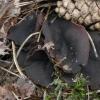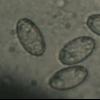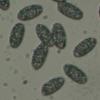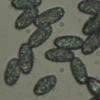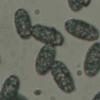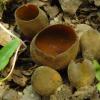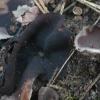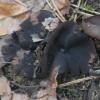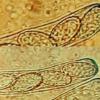
21-12-2025 09:32
Hello.A tiny ascomycete found embedded in wood in

21-12-2025 21:32
Pol DebaenstHello, Garden, Burgweg 19, Veurne, BelgiumOn 10/1

22-12-2025 23:38
Patrice TANCHAUDBonsoir, récolte sur un mur en pierre, apothéci

22-12-2025 00:47
Patrice TANCHAUDBonsoir, récolte à proximité du milieu dunaire

21-12-2025 21:40
Isabelle CharissouBonjour, j'aimerais connaitre les références de

20-12-2025 23:08
Patrice TANCHAUDBonsoir, récolte sur sol sablonneux dans l'arri�

Maybe compare with P. phyllogena (= P. badioconfusa)?

You should post the microphotos of ascospores in a higher resolution, because it's hard to correctly see the ornamentation. I don't believe in the hypotheses of P. phyllogena or P. boltonii.

I haven't met P. boltonii yet so I don't have experience with her. Last year I found Peziza which I finally decided to put on P. badioconfusa's website although I was thinking about P. boltonii. I don't know if it was right, because it was completely differently colored as found so far. The size of the spores, however, was appropriate for this species so I placed there.
See the last collection on this page: (2019.05.26)
Spores:
(18.4) 18.6 - 20.7 (21.3) × (9) 9.1 - 9.8 (10.2) µm
Q = (1.9) 1.92 - 2.2; N = 17
Me = 19.7 × 9.5 µm; Qe = 2.1
http://www.grzyby-pk.pl/gat_p/gat_peziza_badioconfusa.php
I do not know if I understood correctly, but you measured the dipped spores in Melzer (Melzer + Spores: 15.64-17.35 x 7.48-8.52 µm). If so, should their actual dimensions be 1-2 µm larger?
I don't use Melzer, I use Lugol. If the spores in Melzer have the same tendency to shrink as in Lugol then yours are much larger as you state?
Because the pictures do not see ornamentation and other features, which I mentioned earlier, identification is rather not possible?
Greetings from Poland
Mirek

The P. phyllogena (= P. badioconfusa) is very common in Hungary April-May also. This is another species.
Measuring my friend, also in water and no Melzer: Correctly Melzer +, Spores:...
15,5-17,3 x 7,71-8,4 µm.
Q= 1,84-2,1 N= 5
Me= 16,4 x 8,1 Qe= 2
Best wishes
Zoltan
